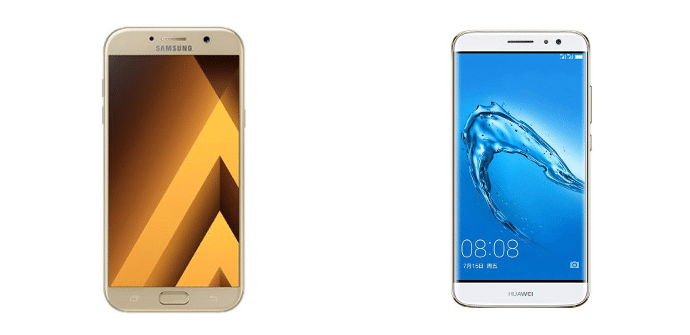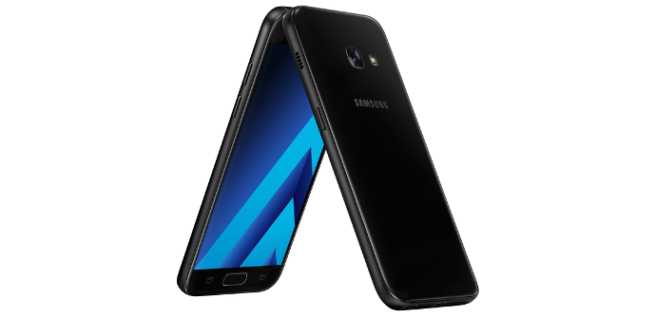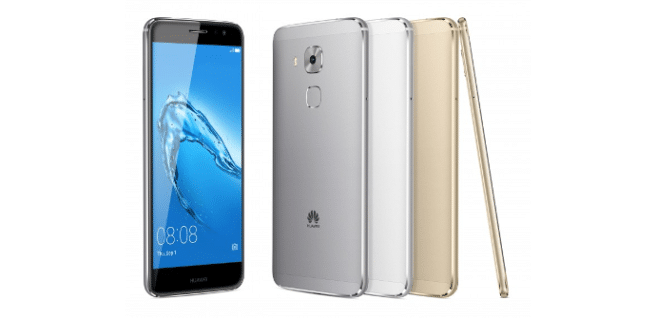
Other manufacturers have recently followed the line opened by the range A Galaxy launching its own mid-range smartphones and phablets, and among the latest models of this type that we have seen undoubtedly one of the most prominent is the Huawei NovaPlus. What are the strengths of each of these phablets and which of them best suits what you are looking for? Samsung or the Huawei? As always, we try to help you decide with a comparative in which we examine the Technical specifications both.
Integrated
The most notable differences in this case are probably the aesthetics, since with the Nova Plus we have a phablet with a clean front and very reduced frames, the usual style of Huaweiwhile with the new Galaxy A7 we find the usual physical home button. Both have, on the other hand, metal casing and fingerprint reader, although the phablet of Samsung It has a little extra, which is water resistance.
Dimensions
Although we do not yet know the weight of the Galaxy A7 and we cannot, therefore, make a complete review of its dimensions, we can at least confirm that the Nova Plus is not only significantly more compact (15,68x7,76 inch against 15,18x7,57 inch), something easy to explain thinking about their respective screens, but also something finer (7,9 mm against 7,3 mm).
Screen
Indeed, that the new Galaxy A7 be a bulkier device makes sense considering that its screen is larger (5.7 inches against 5.5 inches). The two phablets are tied, however, when it comes to resolution (1920 x 1080), although this obviously means that the larger one has a lower pixel density (PPI 387 against PPI 401).
Performance
In the performance section, the main difference is that each of these phablets has opted for a different manufacturer for its processors, although the characteristics of both are very similar (Exynos 7880 eight-core and 1,9 GHz against Snapdragon 625 eight-core and 2,0 GHz of frequency). The two also accompany them with 3 GB of RAM.
Storage capacity
Even clearer tie in the storage capacity section, where the technical specifications are identical: both have 32 GB internal memory and card slot micro-SD, which allows us to gain space externally.
Cameras
In the cameras section, the balance is tilted to the side of the new Galaxy A7, fundamental thanks to its front camera, which comes with a really high number of megapixels that crowns it as one of the true kings of selfies in the mid-range (16 MP against 8 MP). As for the main chamber, on the other hand, they are tied, with 16 MP both of them.
Autonomy
The victory in the autonomy section is the entry point for the new Galaxy A7 if we compare the capacity of their respective batteries (3600 mAh against 3340 mAh), something that cannot surprise us too much either if we consider that it is a larger and somewhat thicker device. In any case, consumption is also an important factor and the phablet display of Samsung it is also larger, so we will have to wait and see what the independent tests tell us.
Price
Although there should not be a big difference in price between them, at the moment we cannot confirm anything because Samsung You have not yet said how much the Galaxy A7 (2016) when it arrives in our country. It is not too risky to venture, in any case, that probably the Nova Plus it remains the most affordable option, considering that it can now be found in some distributors for 400 euros and that it would not be strange if it still went down a bit more, and it would be strange if the other could be even cheaper.
Here you can consult the complete technical sheet of the Galaxy A7 (2017) and the Huawei NovaPlus yourselves.

